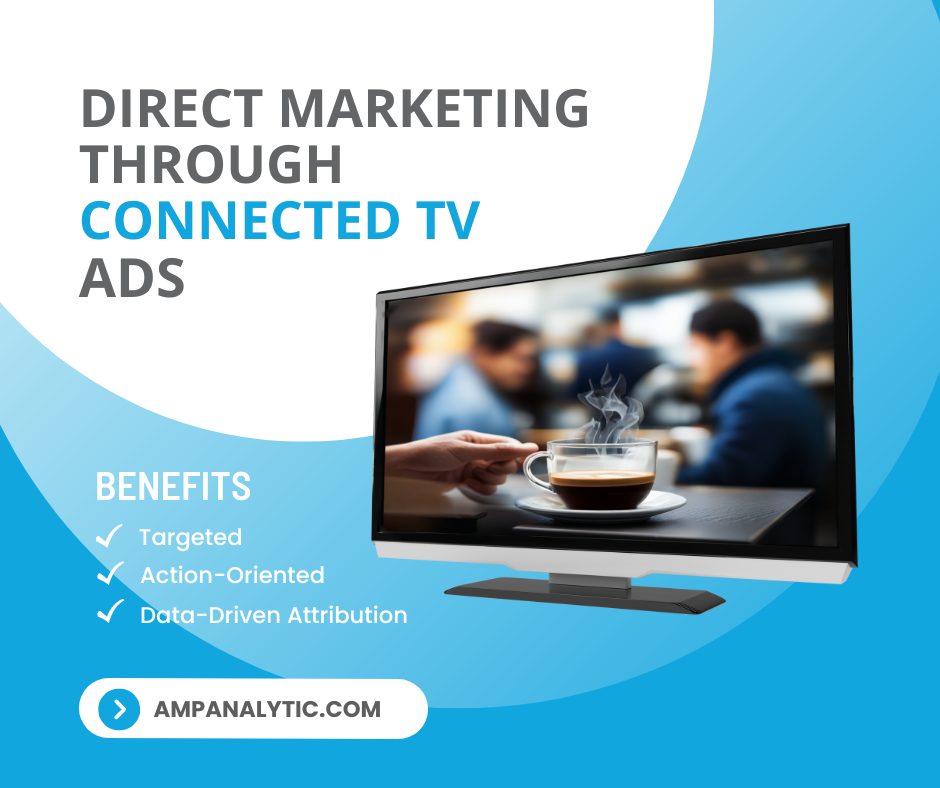
In the ever-evolving landscape of digital marketing, one channel is quietly but powerfully transforming how brands connect with consumers: Connected TV (CTV). Once reserved for brand awareness campaigns, CTV has matured into a dynamic platform for direct marketing – driving measurable actions, generating leads, and increasing conversions. Let’s look at how CTV is the new frontier in direct response advertising.
What is Connected TV?
Connected TV refers to any television that can stream digital content via the internet. This includes:
- Smart TVs (Samsung, LC, etc.)
- Streaming Devices (Roku, Amazon Fire Stick, Apple TV)
- Gaming Consoles (Xbox, PlayStation)
With more consumers cutting the cord and switching to streaming, the reach of CTV is massive – and still growing.
Why CTV Works for Direct Marketing
Traditionally, TV ads were a blunt-force tool – great for awareness but hard to measure. CTV changes that.
1. Direct Tageting
Traditional TV ads are served to whomever views the channel, regardless of whether or not they are a good fit for your brand. This means that not only are you wasting advertising dollars, but you are also sending out generic messages, trying to appeal to a larger audience.
Connected TV allows you to target a strategically selected list of households, so you can maximize your advertising dollars and increase your ROI. You can choose your audience based on data analytics, demographics, location, interests, behavior, and retargeting pixels, giving you greater control over who sees your ads. Because you know who you are targeting, you can also tailor the messaging and offer for those households.
2. Action-Oriented Creative
With features like QR codes, custom vanity URLs, and clickable overlays (on some platforms), CTV ads can drive direct action. You can invite viewers to purchase products, download an app, visit your website, or fill out a form for more information.
3. Data-Driven Attribution
Unlike traditional TV, CTV ads can be tracked across devices. If someone sees your ad on Hulu and later visits your site on their phone, you can know that, thanks to device graphs and IP matching.
Since you know which households you are targeting, you can run a campaign analysis and match up your marketing list to your transaction file. This gives you a clear view of who saw your ad and who completed a purchase.
CTV as Part of an Omnichannel Funnel
Direct marketing works best when it’s part of a broader funnel. CTV slots in beautifully:
- Top of Funnel: Build awareness while planting the see for conversion
- Mid-Funnel: Retarget site visitors with personalized offers.
- Bottom of Funnel: Remind users of abandoned carts or upcoming deals.
Think of it as direct mail with a remote control – personal, timely, and in their living room.
Best Practices for Direct Response Connected TV Campaigns
To maximize your campaign’s performance, keep these tips in mind:
- Short and Punchy: Keep ads to 15-30 seconds in length. Quickly state your point.
- Clear CTA: Use QR codes or on-screen text to guide the viewer to what you want them to do next.
- Test Creatives: Use A/B testing to see which visuals, voiceovers, offers, and placements resonate with your viewers. (Remember to only test 1-2 elements at a time.)
- Retarget Smartly: Follow up across devices using retargeting.
- Measure Everything: Use multi-touch attribution to link ad exposure to actual results.
Final Thoughts: Connected TV Isn’t the Future. It’s Now.
If your direct marketing strategy isn’t factoring in Connected TV yet, you’re missing a powerful opportunity to engage and convert today’s streaming-savvy consumers. With the perfect blend of digital targeting and television storytelling, CTV lets you be both bold and trackable.
Ready to learn more about how you can add Connected TV to your strategy? Let’s connect!
